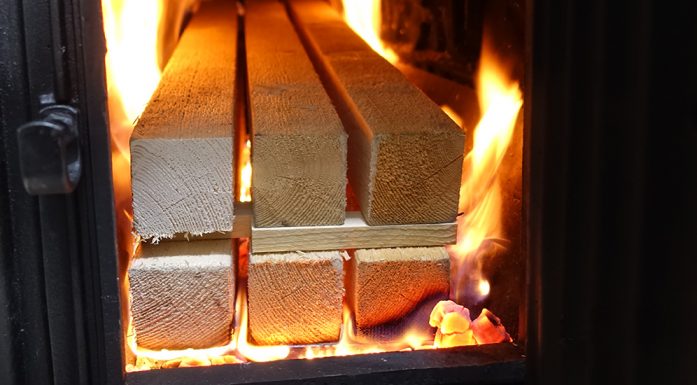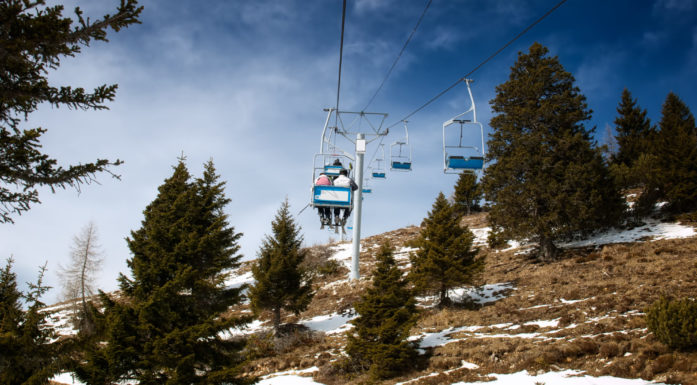SF6: The Truths and Myths of this Greenhouse Gas
The atmospheric concentration of the highly-potent greenhouse gas SF6 has never been higher. Fingers have been pointed at the expanding renewables industry, but is that a fair assessment?
Sulphur hexafluoride, commonly known as SF6, has made a splash in the mainstream media of late. Several articles are pointing the finger at the growth in renewables—specifically wind turbines—as being responsible for the growth in SF6 emissions, with some going as far as saying that the gas is the energy industry’s dirty little secret.
In this spirit of transparency, we asked several experts from NTNU and SINTEF to separate the truths from the myths.
SF6 is damaging to the environment: TRUE.
Along with CFCs, HCFCs, HFCs and PFCs, SF6 is an industrial gas that doesn’t exist naturally in the atmosphere and so impacts the radiation balance, contributing to climate change.
“It is true that SF6 has between 22,000 and 23,500 times higher global warming potential than CO2 when taken over a 100-year perspective. Because it’s so stable, the gas has an estimated lifetime of up to 3,200 years. Considered together, these facts make SF6 the most potent chemically reactive greenhouse gas investigated by the IPCC,” says NTNU Professor Francesco Cherubini.
“The concentration of the gas in the atmosphere is increasing so it’s good to have some attention on this. However, it’s important to put it into context. While it’s a dangerous greenhouse gas, SF6 today contributes less than 1 percent of man made global warming,” he adds.
SF6 is the energy industry’s “dirty little secret”: FALSE.
SF6 is certainly no secret in the Norwegian energy industry. Its use is highly regulated, and many of its users are working together to share experience and come up with viable alternatives:
“There are no secrets surrounding the use of SF6 in Norway’s energy industry. In fact, it’s quite the opposite,” says SINTEF researcher Maren Istad. She is secretary of the SF6 User Group, an association of 47 public and private companies all openly sharing their experiences with SF6.
Also read: #SINTEFblog: SF6 Gas Accounts 2018:
Since 2003, the user group has collected data on emissions and reported them to the Norwegian Environment Agency. “Norway’s history with switchgear using SF6 goes back many years. The equipment is very reliable but any failure makes a big impact, so everyone is keen to share knowledge and experience. There’s even a spare parts exchange facilitated by the forum,” adds Istad.
SF6 is used in wind turbines: TRUE.
SF6 is used not in the turbine itself, but in the switchgear that controls the current generated by the turbine. But there is nothing unique about wind turbines. The gas is used in switchgear in many other power applications.
SF6 has two uses: as an interruption agent and an insulator. “Unlike a light switch that breaks a simple electrical circuit, doing the same in a higher-rated application is more challenging and additional protection is needed. Typically, a mechanical circuit breaker is used inside a pocket of SF6 gas that to extinguish the electric arc. At present, it is the most compact and cheapest method of safely stopping the flow of electricity,” explains SINTEF researcher Atle Pedersen.
However, comparing wind turbines with other power applications of SF6 must be set in context. “The amount of the gas used in the switchgear of a wind turbine is typically less than three kilograms. A substation for overhead power lines may require several tonnes, creating a substantially bigger environmental problem should a leak occur. Suitable alternatives to SF6 will also be available more quickly for lower-voltage applications such as turbine switchgear,” adds Pedersen.
There are no viable alternatives to SF6: PARTLY FALSE.
Bodies including the European Union are known to be considering a ban on SF6 at low-to-medium voltage levels in the future. This can’t happen without viable alternatives, such as vacuum technology or different gas mixtures.
“Such alternatives are commercially available now for use in electrical switchgear at low-to-medium voltages. Solutions for use at higher-voltages are more challenging, although pilot installations do exist at 145kV,” says SINTEF researcher Nina Sasaki Støa-Aanensen.
However, it is true to say there is no short-term catch-all fix. One leading alternative, vacuum technology, just solves the interruption aspect. SF6 or an alternative gas is still needed to provide insulation. “Even when solutions are developed for all voltage levels, switchgear typically lasts for around 40 years. It will take time for a complete shift away from SF6,” she adds.
- Also read: #SINTEFblog: Substations without SF6:
SF6 is unmonitored and unregulated: FALSE.
The European Union leads the world in the regulation, monitoring and management of SF6 emissions. Norway has consistently adopted the EU regulations into Norwegian law because of its membership in the European Economic Area. The most recent example is the new regulation on fluorinated greenhouse gases, Regulation (EU) No 517/2014.
“Within Norway, all utilities with switchgear have to collect and report their SF6 inventory and emissions. The SF6 User Group collects this information and reports it to the Norwegian Environment Agency,” explains SINTEF researcher Magne Runde.
“In many countries, there are rules in place dictating which industries can use the gas and how they can use it. In Norway, SF6 is only permitted in relation to switchgear. Strict training requirements are set for those who work with the gas,” adds Runde.
He delivers the theoretical part of the two-day SF6 certification course that provides the required environmental certification to be able to perform work on SF6 plants, both in Norway and across the EU. This includes education on the physical, chemical and environmental properties of SF6, along with techniques for safe transport, storage and recycling.
- You can learn more about the SF6 User Group in Norway here.





